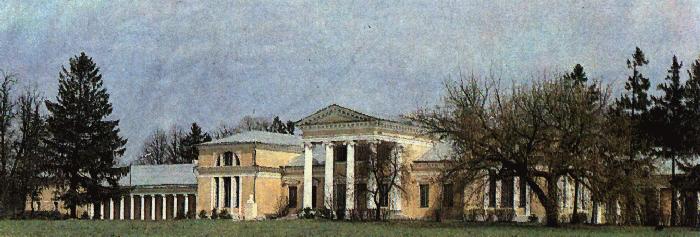![]()
Snow is a village in the Niasvizh district, Miensk region, about 139 km North-West of Miensk. It is a station on the railway line Miensk-Baranavicy.
The name has nothing to do with winter, the origin of it is purely Slavonic. This village has always been sort of a little mirror reflection of the Belarusian history. One of the Polish kings, who stopped there to have a rest on his way to and from Niasvizh, called it a town of dreams (Miasto SNOW i marzen), another version of the origin of the name says it means that the place resurrected again and again (Znou or Snow) on the same place after devastation by numerous invaders and fires. Both versions are historically justified. Snow was practically leveled and looted many times by Russians, Swedes, and French. The place was on the very battlefield edge during the last two world wars with Germans.
Snow is situated in a picturesque location good for dreams, and close to international and local crossroads, which were the reasons for its resurrections.

The village has three historic buildings built due to the efforts of the Rdultowski family. A beautiful palace of the noble family overlooks a pond and the banks of a narrow channel, the waters of the Snowka river. The palace dates back to the beginning of the XIX century and old people say the ghosts of the Rdultowskis can still be met in the nearby park late at night. No wonder! Right across the river there is the family's shrine, where their bones now rest in peace after they had been disturbed by the communists in the 40-ies.
The shrine is the St. John's catholic parish founded in 1658. Snow, now predominantly Russian orthodox, has a Russian orthodox church too, constructed due to the Rdultowskis' contribution. The Kosma and Damian orthodox church is located on a hill dominating the village, and according to the local priest dates back to the XVII century. The present day catholic church was built in 1760, just a couple of years before the Russians came in 1772 to govern the Land for the next 200 years.
The church was reconstructed in 1825. The Russians closed it in 1862 after the place became one of the centers of the patriotic uprising of the local population against the Russian Empire.
The church was opened again in 1920/22 by the government of the new Polish state when the western part of the present Republic of Belarus became part of Poland. The Red army retreated to Russia via Snow after the defeat from the Polish army near Warsaw in 1920. Snow was just 30 km from the old Polish-Soviet border and the Polish military actively helped the local catholic parish.
The church was closed by the Soviet occupation administration after the communist invasion in Poland September 17, 1939. September 1939 marked the end of a local community created by many ethnic groups of the former Great Lithuania, a tragic time for local Belarusian, Polish and Jewish people, a time of deportations, evictions, massacres. Many of the local polish people ended up killed by Russians and Germans in local woods, some of the officers died in the Katyn forest, many civilians died during deportations to the USSR. The Jewish population was completely exterminated by the nazis in 1942. Many Belarusians either got killed in 1941-1944 or emigrated after the war.
Six German soldiers were also killed here in 1944 and are buried right by the St. John's church without any memorial sign. It is high time to bury their bones in a Christian manner and as a sign of mutual respect and compassion between Belarus and Germany. More than half of the century passed!
History repeats itself. The place resurrected again as in the past. Snow has an absolutely new population now. A comparison to the Phoenix bird would not be an exaggeration. Belarus became an independent state in 1991. The local people restored the almost demolished St. John's church and opened it again in 1992.
Snow is also a prospering agricultural production center, some Dutch and German companies took part in the improvement of the production potential of the place. The local population works hard and their life standard is higher than in neighboring communities, where poverty, alcoholism and obvious resulting genetic degradation of part of the families are real problems. The place leaves much to be desired in terms of hi-tech communications and other infrastructure items so usual in the modern industrial world, but this can be fixed, after all this story has been electronically mailed to you...
directly from Snow by Vitaly Bedritsky
This page is part of the Virtual Guide to Belarus - a collaborative project of Belarusian scientists abroad Go to Belarusian towns, cities and several villages - |
 |